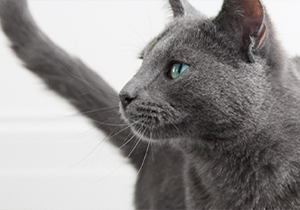Common Cat Skin Diseases & Other Skin Problems
So, it is not a surprise that cat parents are incredibly proud of their feline friends, making sure they have nothing but the best. The secret behind the unmistakable grandeur of these fur babies lies in their remarkable skin, which plays a massive role in every kitty’s well-being. Problems with feline furries’ fur such as irritation of the skin and itchiness can be a fundamental indicator of understanding their physical health.
Additionally, the acat skin serves several vital functions, such as regulating their body temperature, providing a sense of touch, and preventing any germs from entering the body. Cats have extremely elastic skin, which not simply helps them to be nimble, but also contributes to being a physical barrier against environmental hazards, protecting them from wounds in their outdoor adventures. And as important as their skin is, cat parents must make sure their fur babies are not suffering from any cat skin conditions that might threaten their general well-being.
Signs of Skin Allergy in Cats
Cat skin diseases might not always be a common health concern for cats, but they often result in symptoms that might worry cat parents. So, it is vital to identify these signs as early as possible and help your furry munchkin get treated by a veterinarian for cat skin conditions.
-
Inflamed Skin
Having inflamed skin is a crucial sign of cat skin allergies and disease in almost all mammals. And especially when it comes to our furry kiddos, having inflamed skin can be a cause of irritation and discomfort. Although inflamed skin does not indicate serious health conditions, it is a common symptom of cat dermatitis, which is often caused by external agents, as well as allergies.
-
Sores and Scabs
Cats are famously known for their flexibility, which helps them to avoid physical injuries. Their elastic skin and silky fur also play an important role in making sure they are not easily wounded. However, if your cat is developing sores and scabs frequently, it might indicate that its skin is fragile or is losing the moisture content it is supposed to have, which can compromise its elasticity, increasing the risks of getting wounded, as well as cat skin conditions.
-
Dry Scaly Skin
Dry scaly skin is one of the most distinct signs of dry FIP (Feline Infectious Peritonitis) in cats and is often detected only at advanced stages of the disease. Dry scaly skin is usually a reason for worry for cat parents as dry FIP has a high mortality rate. Additionally, dry and scaly skin in felines considerably raises the risks of bacterial and fungal infections and must be treated immediately.
-
Hair Loss / Bald Spots
Having a bald spot is another symptom that your furry is having skin allergies. Cats generally have a lush, silky coat of fur covering their body, which plays a massive role in regulating their body temperature. In addition, cats groom themselves by licking their coat clean which helps get rid of tangled or loose hair. However, if your cat is shedding excessively or developing bald spots, it is a clear indicator of skin problems.
-
Lumps
As a cat parent, your feline friend developing a lump on its body is always a sign of distress and concern. These lumps can grow to be painful, especially around the joints, and cause your kitty to become irritated. However, not all lumps are cancerous, nor do they indicate health risks. Certain feline breeds often develop lipomas or non-cancerous lumps. These fatty tumours are often seen in senior or overweight cats and are generally harmless.
Causes of Cat Skin Allergies and Diseases

Cat skin diseases and allergies can be a result of several factors. Cats who prefer going on outdoor adventures suffer from skin irritation caused by external agents. Mentioned below are some of the common causes of cat skin allergies and diseases:
-
Fleas & Ticks
Fleas and ticks are the most common causes of cat skin diseases and allergies. Especially common in stray and outdoor cats, cat skin allergies caused by ticks and fleas often develop into sores and rashes. Flea saliva has a high content of antigens that can result in cat skin infections, causing feline dermatitis. Parasitic flea reactions are also common in outdoor cats. In addition to being contagious, a single flea bite can also often lead to exaggerated reactions in cats.
-
Food-Related Allergies
Much like their human parents, our royal feline friends are no strangers to allergic reactions caused by foods. Some cats are more likely to develop cat skin problems and skin irritations and diseases caused by food-related reactions than any environmental hazards. Certain cats show allergic reactions to beef and dairy, which can manifest in irritations on their skin. In addition, medications, such as antibiotics can cause a microbiome imbalance in the gut, leading to cat skin problems.
-
Environmental Factors
Environmental factors play a significant role in triggering cat skin diseases, especially in kittens. Cats often absorb allergens present in the environment through their skin, developing cat skin problems. Pollen and mould spores are natural agents that can trigger an exaggerated immune response, leading to allergies on your furry munchkin’s skin. These potential hazards can lead to flaky skin and rashes on your fur baby’s body, as well as trigger symptoms such as runny eyes and nose, and sneezing.
Ways to Prevent Cat Skin Diseases and Allergy
-
Feed High-Quality Cat Food
Cats with skin problems can benefit from consuming nutritional, high-quality foods such as Sheba. As carnivores, the feline diet mostly consists of animal proteins, fats, and fatty acids that help them in keeping their coat healthy and elastic, lowering the risks of cat skin diseases. Commercially available premium cat food like Sheba can help prevent cat skin allergies as they are high in nutritional content.
-
Use Flea and Tick Control
Fleas and ticks are some of the most concerning factors behind cat skin allergies, and if your kitty has a preference for outdoor adventures, it is a good idea to keep an eye on ticks and flea infestations. Not only do tick and flea bites pose a substantial risk of cat skin problems, but they are also contagious and can spread to healthy cats. So, over-the-counter flea and tick control solutions and dewormers are advised for frequent use.
-
Manage Stress Level
Being under physical duress can be extremely stressful for your feline buddy, which can aggravate the symptoms of cat skin allergies. So, while your kitty is recovering from cat skin allergies, managing their stress level can be of great help. This includes keeping them well-fed and hydrated, offering them some space from situations that might startle them, and showering them with lots of love and affection.
-
Regular Grooming
Regularly grooming your cat can be beneficial in avoiding various cat skin allergies and infections. Not only does grooming your kitty’s fur regularly help in getting rid of loose hair, dirt, and tangled fur, but it also helps in spotting possible rashes, flaked skin, sores, and lumps on their body. Furthermore, grooming can be extremely relaxing and comforting for your munchkin, helping you to establish a deeper bond as a cat parent.
Conclusion
Royal furry felines have remarkable skin that contributes to their elegant frame and adorable fur. In addition to its cosmetic benefits, cat skin serves several vital functions in supporting various physical functions in your fur baby’s everyday lifestyle. Primarily, the cat skin serves as a physical barrier that protects the cat’s health against environmental hazards and bacteria. Being elastic, it is also fundamental in regulating the mobility of cats, assisting them while climbing and navigating difficult terrains. It also helps prevent wounds and infections, and any physical damage to their delicate internal organs.
Furthermore, it plays a vital role in regulating their body temperature, proving to be of utmost importance in your majestic munchkin’s well-being. So, as cat parents, it goes without saying that it is important to keep cats away from cat skin diseases and allergies that might risk their health.
FAQs
-
What do cat skin infections look like?
Cat skin infections can be caused due to the action of environmental agents, as well as by fleas and ticks. Common cat skin allergies develop symptoms such as rashes, sores, skin inflammations, flaky skin, and hair falling out in patches.a
-
What are common skin problems in cats?
One of the most common cat skin problems is feline dermatitis. Cats also suffer from skin disease caused by allergic reactions to food, bacterial infections of hair follicles, as well as from natural agents such as pollens and mould spores.
-
How can I treat my cat's skin infection at home?
Cat skin infections can be effectively treated using home remedies, one of the most popular being spraying the infected area with a mixture of vinegar and water. Additionally, topical antifungal medications such as lotions can also cure cat skin infections.
-
How long do cat skin infections last?
The duration of cat skin infections is generally determined by the severity of the infection and the medication prescribed. While mild rashes will usually disappear in a week, more persistent skin infections, such as pyoderma can last more than 3 months.
-
Can cats recover from infection on their own?
Stray and outdoor cats are often able to heal from common cat skin problems on their own. Most cats lick the infected area as feline saliva contains antibacterial agents. However, you can also use diluted vinegar solution and topical ointments.



 Share
Share







